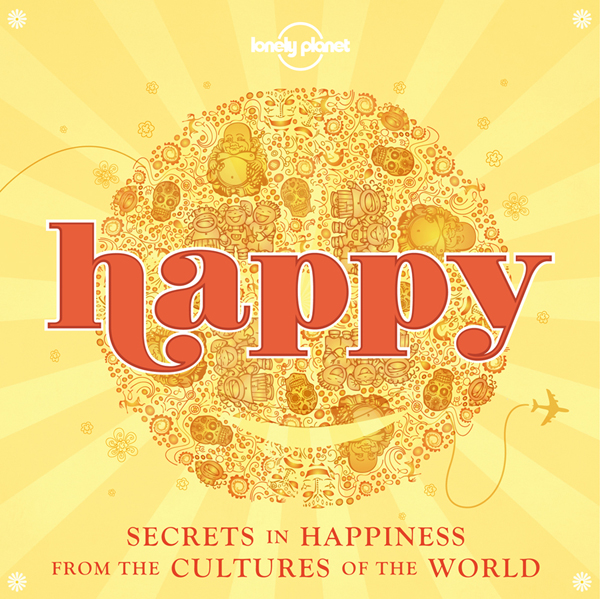The Holy Grail of Happy

This month, Lonely Planet released a book on a topic we all could use a little more of: happiness. Happy: Secrets in Happiness from the Cultures of the World compiles 55 practices that inspire joy, from Italian festivals to unusual yoga practices in India. The goal? To motivate readers to seek their own bliss. Women’s Movement caught up with one of the book’s editors, Robert Reid, who is also the author of two dozen Lonely Planet guidebooks, about finding joy all over the globe.
WM: How did you sleuth the world’s 55 best joyous practices?
Robert Reid: For books like this, it’s nice to have a pool of over 200 authors, who go to all these places and collect customs, along with hotel details, for all our guidebooks. So it’s a project that simply couldn’t have been done by a couple people in a cubicle. You have to go to these places to get this.
WM: Which happiness customs resonated most with you?
Reid: For outsiders, Mexico’s Day of the Dead seems grim—a celebration of parades with skeletons and death all around. It’s a lesson for kids to accept death as part of life. So there’s a peace that comes from it. It’s fun, but inspiring too. Oh, and Vietnamese Tet. Days one and two are for family—like our Christmas and Thanksgiving combined—but day three is for teachers. How charming. I was a teacher in Saigon 15 years ago and can testify that the respect shown for teachers, during Tet and otherwise, is very, very sincere and important. I have a drawer full of cards and gifts that my students gave me.
WM: Were there some that surprised you?
Reid: The notion of throwing colorful water balloons into each other’s faces, like during the Holi celebrations in India, definitely stands out! We also found that happiness is simply linked with customs and spirituality. Some places are more dedicated to it, like Central Asians being such over-the-top warm hosts.
WM: Are humans similar or diverse in the ways they seek happiness?
Reid: I think people are essentially the same everywhere. They just have a different way of dressing and eating. The book talks of Italy’s pastime of an evening stroll—la passeggiata—which I find so charming. It’s the same in Oman. I was there a decade ago and wandered into a teashop, where men in robes bought me tea, talked about families and invited me for a cheerful walk along the waterfront promenade.
WM: Can world travel itself inspire happiness?
Reid: I think Maureen Wheeler [co-founder of Lonely Planet] says it best in the introduction to the book: “Traveling to find happiness is probably always doomed to failure.” You can’t try for it. Just be open, try new things, and it comes. It always comes. In travel, you can’t plan it, happiness just sneaks up on you. Just keep an eye and ear open for it.
WM: How can travel inform a lasting sense of happiness at home?
Reid: I think the ultimate goal in travel is to see and understand your home more. It’s the ultimate destination. So by going and seeing how different people live, eat, dress, worship, and celebrate, you start to see your home for what makes it special.
Kamagra oral jelly Online something to buy the most convenient way. He doesn’t demand from you any actions except how to visit the website. And in separate with goods necessary to you to put the end. To specify your address and to wait for the supplier to whom you will give money.


February 10th, 2012 at 5:44 am
Hi there ! Nice ctesnot for travelers who need Lonely Planet treasure of guide books around the world.Thanks for sharing.. Surender Sharma recently posted..